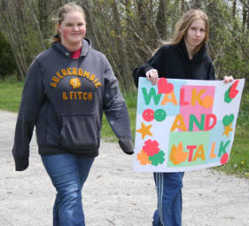Neighborhood walkability linked to weight

New research suggests that living in the suburbs may make people fatter, especially for those who live in neighborhoods designed more for cars than foot traffic.
A study in the September issue of the American Journal of Preventive Medicine, says those who lived in the most walkable neighborhoods weighed an average of 8 pounds less than people who lived in the least walkable areas.
"Neighborhoods built before 1950 generally have sidewalks and other characteristics that make them more accessible to pedestrians, including being more densely populated and having restaurants and other businesses nearby," reported lead researcher Ken R. Smith, PhD.
In general, newer neighborhoods offered fewer opportunities for walking.
"We aren't saying the move from older to newer neighborhoods is the cause of the obesity epidemic, but it may be a factor," said Smith.
In an effort to test the theory, Smith and colleagues calculated the body mass index (BMI) of 453,927 residents of Salt Lake County, Utah, using height and weight data from their driver's license applications. Adults between the ages of 25 and 64 were included in the analysis.
The researchers also looked at census data that included information about the neighborhoods where the residents lived.
Generally, the research suggested that the more walkable a neighborhood was, the less likely its residents were to become overweight.
The analysis showed that a man of average height and weight who lived in the most walkable neighborhood in Salt Lake County would be expected to weigh an average of 10 pounds less than a man living in the least walkable neighborhood. For women, the difference would be six pounds.
Smith says the growing emphasis on designing pedestrian-friendly places for people to live, work, and play could have a large, positive impact on health in the future.
